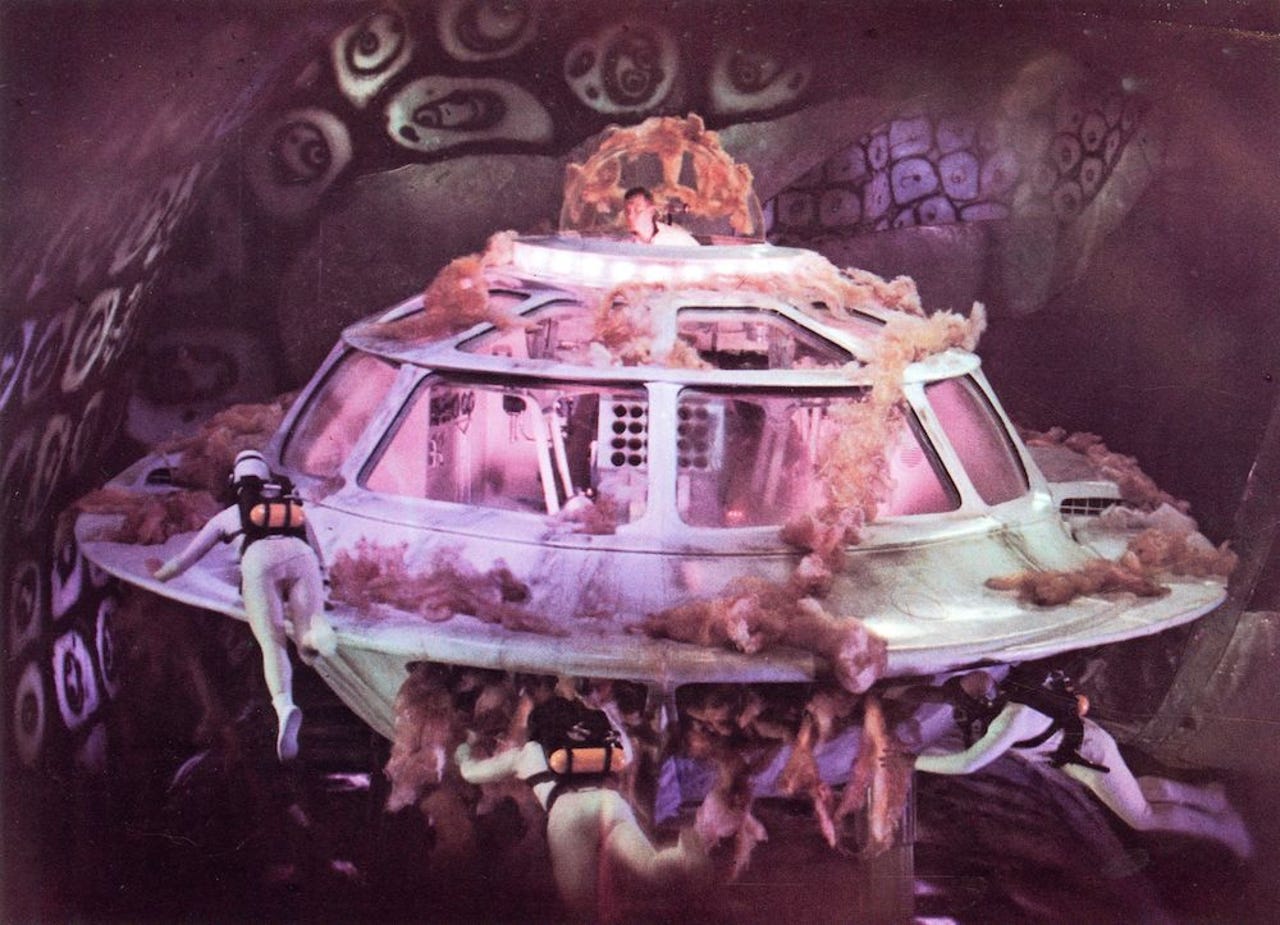These microscopic robots swim in blood to diagnose disease


Still from "the fibers" scene, Fantastic Voyage.
Picture a robot. You're probably envisioning something fairly substantial that goes beep boop bop. But a lot of early work is being done on nanomachines--robots so tiny they might not be visible to the naked eye.
Researchers at Brock University in Ontario, Canada, recently published positive results after building a robot out of a 20-nanometer gold particle. Short and long strands of DNA attached to the particle form the functional mechanism of their little machine, which is designed to detect diseases in a blood sample.
The long DNA strands contain the genetic sequences of whatever disease the bot is testing for. The short strands carry fluorescent signal reporters. If biomarkers for the disease are present in a blood sample, the machine "switches on."
When activated, the bot is designed to use its long DNA strands to cut the short DNA strands, activating fluorescent signals. The result is a glowing bot, which indicates a positive result.It's that process, which happens autonomously, that makes these little specks true robots.
Theoretical physicist Richard Feynman was one of the first to postulate about manmade molecular machines way back in the 1950s. But the technology to make those devices a reality is only now within reach of advanced labs.
In addition to Nubots, an abbreviation for nucleic acid robots, such as the one the Brock researchers have created, other nanomachines may rely on a combination of synthetic molecules like diamondoids and organic organisms such as viruses for drug delivery and even nano surgery. Get ready for a lot of clumsy Fantastic Voyage references.
Nanomachines may also play an important role in manufacturing, especially if technologies like quantum computing step firmly across the theoretical divide and gain purchase as viable consumer technologies.
So far, the Brock University researchers have used their machine to detect tuberculosis, which is still a big problem in much of the world. The results were published in the journal ACS Nano in January.
Eventually the bots will be programmed to capture specific microRNA in samples, which would make it suitable to detect biomarkers for cancers.